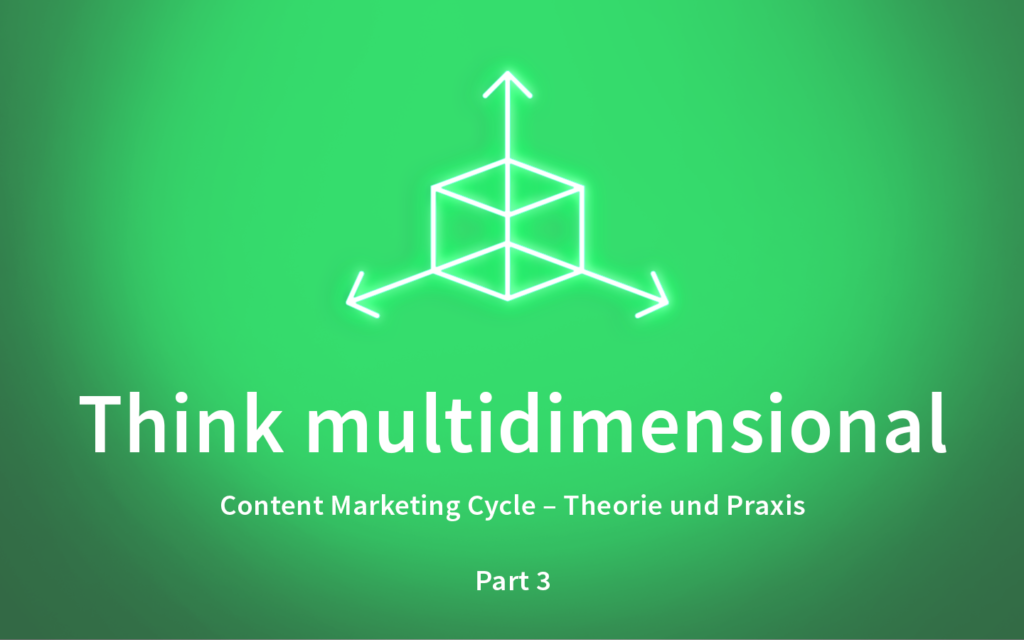Content Marketing Cycle – Theorie und Praxis, Part 3
Autor: Jens Gützkow
Every media maker defines “digital success” differently. But measuring this success is not a matter of course – the interactions between content, target groups, distribution channels, and conversion are too complex. How can we evaluate success in a multidimensional way that makes it possible to draw intelligent conclusions from the results? A mind game.
Not so long ago I was a guest at an event where publicists, in particular newspaper and magazine publishers, were meeting to exchange views. The main issue on the agenda was the question of how money can be made with digital content – a constant theme in these times where the readers are often more digitally oriented than the media makers. Prominent publishers presented their ideas and projects including A/B testing with different headings and the subsequent analysis of the number of clicks, advertising pitches, the conversion of users into subscribers , and paywall concepts with click baiting teasers.
It made me think. All the strategies presented were based on the conventional understanding of media consumption: an editorial team creates content and the reader must be made aware of it. The “digitization” is often reduced to the distribution channel – i.e. you are digital by virtue of the fact that content is made available online and that you are addressing interested parties through online advertisements or social media communities. But this attitude also indicates how little media makers take advantage of existing data and how inconsistently digital knowledge is used.
I am firmly convinced that we have already reached the point where such an approach is no longer sufficient for digital success. As I see it, in addition to good content, media makers will need two things in the future: a definition of what exactly digital success means for them and an intelligent analytical system that converts the relevant indicators into new content and strategies.
When is a medium digitally successful?
This is exactly the kind of question that can only be answered with “it depends”. Each one of the PressMatrix customers I asked gave a different answer. For one the digital reach (i.e. the readers) is decisive, for another it is the turnover with online subscriptions, while others pin their hopes on followers and shares. Moreover the answer is always extremely dependent on the target group the medium wants to reach. Smaller but more specific target groups are particularly easy to address digitally.
Notable in all this is that the various dimensions of digital success are rarely linked. In most cases it does not go beyond the obvious correlation “attracting more attention = attracting more subscriptions”. The opportunity to use new, more targeted ways to find the intended target group is wasted. Media makers do of course know that digital success cannot be broken down into a simple formula, but any other system quickly becomes too complex.
Measuring digital success multidimensionally and drawing conclusions from the results.
In the future, systems based on artificial intelligence will support media makers. – And not only when creating content, but also when analyzing its success. This is how I imagine it: every kind of attention that a piece of content receives is recorded and evaluated according to the predefined goals. A matrix of content pieces and channels is created, the intersection reflecting the evaluation of the success. This evaluation matrix, i.e. how important a particular result is, is determined by each media maker according to their own criteria and customized for each individual campaign. An AI engine supports the evaluation – this is also necessary, because the whole thing quickly becomes unmanageably complex. If further data, for example externally created trend analyses on user behavior and hot topics, can be integrated into the analysis, the AI will become an astute advisor. At the click of a mouse, she’ll create a plan for acquiring more readers, more shares, or more conversions.
It may still all sound a bit abstract. But in reality, developments are already heading in this direction. Content management systems are already distributing content automatically to various channels and the recording of clicks, shares and so on has long become standard. Now it is important to examine how it all fits together and to draw intelligent conclusions. So that digital success stops being a lucky strike, and turns into plannable business.

